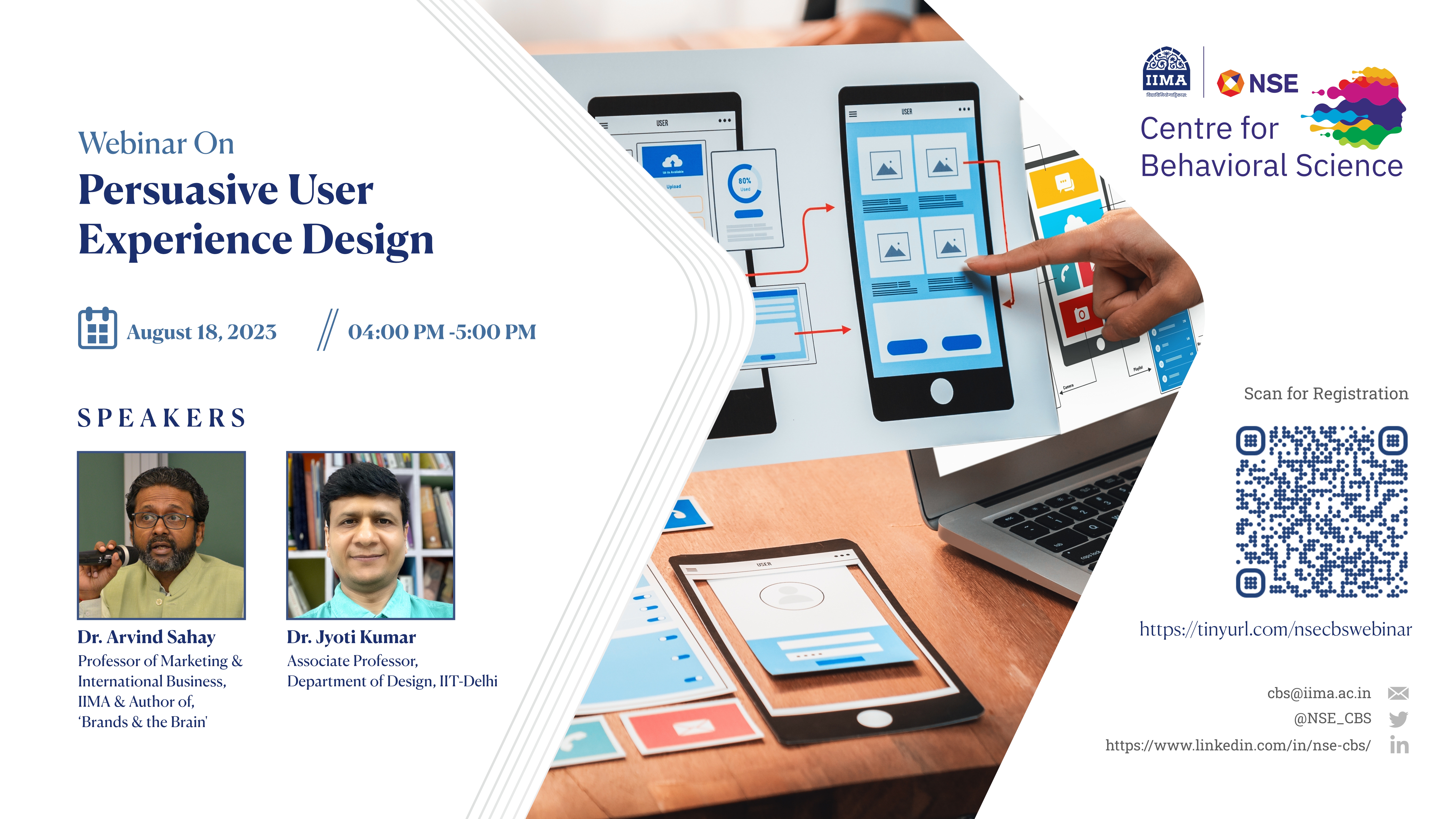
18/08/2023 - 18/08/2023

Dr. Jyoti Kumar is Associate Professor at the Department of Design at IIT Delhi. With 87 international peer-reviewed publications to his name, Dr. Kumar has been teaching UX design at IITD since 2010 and runs a UX laboratory at the Department of Design. Dr. Arvind Sahay is the Director at the Management Development Institute in Gurgaon. Formerly, Dr. Sahay was Professor of Marketing & International Business and the Chairperson of the NSE Centre for Behavioral Science at IIMA. Dr. Sahay is also the author of, ‘Brands & the Brain’ published by Penguin Random House in 2022.
User Experience (UX), a concept not entirely new but enjoying a resurgence in popularity, is often misapprehended, occasionally even conflated with User Interface (UI) design. Within the realm of UX, the pivotal protagonist is the 'User' - a crucial distinction. Unlike the broader human experience, UX zooms in on the specific usage context, empowering designers to craft persuasive interfaces. However, this art of persuasion straddles a fine ethical line as it wields the power to either enhance or undermine decision-making.
UX designers are adept at deciphering the intricate web of personal choices that drive users, influenced by an array of factors such as preferences, needs, and motivations. They often draw inspiration from psychological models like Maslow's Hierarchy of Needs, which provides valuable insights. For instance, when applying Maslow's theory, identifying the user's position within the hierarchy becomes pivotal, enabling tailored pitches and designs that resonate with their specific needs. Regardless of the chosen motivation model, UX researchers conscientiously consider the trifecta of buyer, brand, and product in every equation. The tools of their trade, including keen observation and qualitative interviews, help unveil the intricate tapestry of human motivations. Professor Arvind Sahay underscores the importance of adapting designs to cater to the evolving needs of different generations while recognizing the fundamental constancy of the human brain.
At its core, UX is an unswerving homage to its users. Practitioners follow a user-centred Design Process, which entails a series of stages: identifying users, defining problems, generating ideas, crafting prototypes, and subjecting them to pre-release testing. Usability testing, a critical component, encompasses methods like think-aloud tasks, bolstered by the application of neurophysiological techniques, to gauge the efficacy of tools and the degree of user-centeredness in the design. Achieving the right balance between quantitative, qualitative, and contextual considerations is paramount, all while aligning these strategies with the unique context of the company at hand. Professor Jyoti Kumar is spearheading pioneering research into the integration of neurophysiological methods to create more potent persuasive tools and user-centred designs.
In the ever-evolving landscape of UX design, it is essential to disentangle it from the conflation with UI and embrace it as a dynamic discipline that not only understands but also respects the nuanced psychology of users, while ethically wielding the power to shape their experiences.
